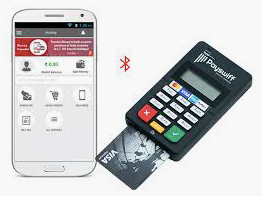The mPOS groundswell in both developed and emerging markets
What’s up with Square’s market cap at $26 billion, PayPal’s recent acquisition of iZettle (the “Square of Europe”) for $2,2 billion, and a new study predicting that 1 in 4 Point-of-Sale terminals will be mobile Point-of-Sale (mPOS) by 2023? mPOS turns your smartphone into a card accepting payment device. Initially made popular in the US by Square, mPOS is now flourishing in developed markets, but with probably even more potential in emerging markets.
A new study from Juniper Research suggests that annual mPOS transactions will increase threefold from the current 28 billion to over 87 billion by 2023. According to a 2017 study by Transparency Market Research (TMR), the global market for mPOS was US$4.2 billion in 2017, expanding at an exceptional 35.4% CAGR during the period 2017 – 2025, to a value of US$47.7 billion.
What are the reasons for this groundswell? The increased digitization of payments and widespread demonetization have been key factors. People across the world prefer cashless transactions, especially mobile payments. The rising popularity of cloud-based solutions in the IT sector is also an important factor.
“With favorable conditions, such as increasing penetration of cards and a burgeoning installed base of smartphone and Internet users, many countries, particularly the U.K., the U.S., and Japan, are offering advantageous opportunities for the growth of the global market for mPOS,” states a TMR analyst.
Whilst the banks are rolling out mPOS service as an extension to their merchant offering, there are many new Payment Service Provider (PSP) entrants using mPOS as their entry strategy, signing up merchants and connecting with acquirers at the back end. Well-known regional examples are iZettle and SumUp, but with fairly low barriers to entry, every market has its own providers, such as Yoco, ZipZap, Sureswipe, SnapScan, Zapper and Ikhokha in South Africa.
These mPOS providers are leveraging their merchant SME base to provide additional financial and commerce services to this traditionally underserved segment. Most providers are now offering some form of working capital finance to merchants, using the transactional data to assess trading volumes and risk, whilst some go further and offer services such as invoicing and reporting. Square in the U.S. is leading the way and is quietly turning itself into a full service bank, offering its Cash App (effectively a current account), POS consumer lending and payroll management services.
Emerging markets typically have less than 10 payment terminals per 1000 inhabitants, in contrast to the U.S. and most European countries (currently in the range of 25 to 30). China and Mexico have about 7 and Russia has 8. Of course, some countries have cultures that have traditionally relied on cash payments and therefore have lower card penetration.
In emerging markets, mPOS represents an opportunity to leapfrog to mobile payments. Much in the same way emerging market consumers have eschewed landlines and wired networking infrastructure for mobile connections, we are seeing emerging market merchants go straight from cash boxes to mPOS solutions. And mPOS terminals are starting to accept mobile money wallets in addition to cards.
The chief benefit of mPOS is gaining the ability to accept secure card and electronic payments on the go. In places like India, Vietnam and Indonesia, it is common to see door-to-door sales forces for services such as insurance sales, prepaid utility services, and bill payment services.
Smaller merchants with lower transaction volumes are more inclined to leverage an mPOS solution where they’re able to pay-as-they-go rather than sign up for fixed monthly/year contracts and fees. Most of these smaller merchants in emerging markets also already own a mobile device and are comfortable using this intuitive technology, thus reducing the learning curve and upfront investment needed to accommodate card payments.
Emerging markets are starting to exhibit many of the same trends as developed markets in terms of demonetization (through the use of debit cards and mobile money wallets) and smartphone penetration, and new entrants can leverage the low barriers to entry that mPOS provides, to quickly increase payment terminal penetration. This is the “foot in the door” into providing more comprehensive financial and commercial services to SMEs in both developed and emerging markets.
